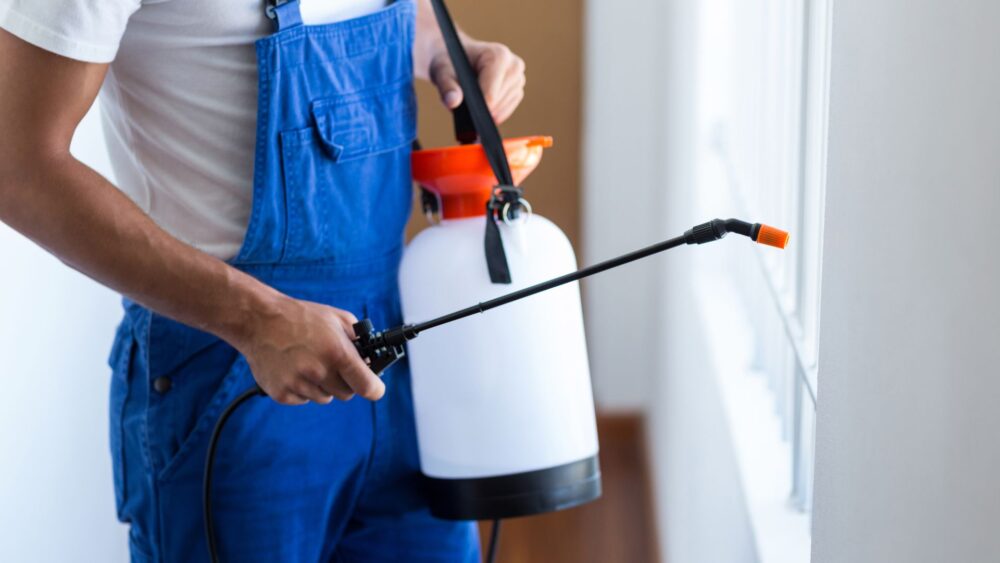Ever find yourself wondering why, despite all efforts, pests still sneak into your cozy corners? Well, you’re not alone. Pests are sneaky little buggers, always ready to spring a surprise visit on us when we least expect it. However, it’s not all doom and gloom in the battle against these uninvited guests. Cracking the code on their behavior and figuring out your next move is the key to waving them goodbye for good. From sealing entry points to choosing the perfect bait stations – yes, there’s a method to this madness! So let’s dive straight into making your living space a no-go zone for pests.
Pest Prevention Tips for Your Home
Keeping pests in check is key to ensuring your home stays a healthy and happy place. You know, those pesky critters we all find at home aren’t just annoying—they can actually spread sickness, mess with your food, and even wreck your place. But you don’t have to wait for a pest problem to spiral out of control. With some simple prevention tips, you can keep your home pest-free. Pests are sneaky creatures. These little invaders have a knack for squeezing through the smallest spaces and cracks to make themselves at home in your place. To keep them out, you need to seal all potential entry points. Check around windows, doors, and utility lines for gaps, and use caulk or weatherstripping to close them up. Don’t forget about vents and chimneys too. Install screens to prevent pests from getting inside.
Keep Your Home Clean
A clean home is a pest-free home. Bugs just love to crash the party where there’s leftover food, tiny crumbs, and piles of clutter hanging around. Make sure to wipe down counters and sweep floors regularly. Store food in airtight containers, and don’t leave pet food out overnight. Keep your garbage cans sealed and take out the trash frequently. The less appealing your home is to pests, the less likely they are to stick around. Mosquitoes and their annoying friends are big fans of water that doesn’t move. Honestly, it’s like they’ve found their paradise there. Eliminate any sources of standing water around your home. We’re also talking about the usual suspects like gutters that are begging for a clean, birdbaths that have seen better days, and yes, even your pet’s water bowl. If you have a pool or fountain, make sure to keep it properly maintained and treated. Standing water is an open invitation for pests.
Maintain Your Yard
Watch out, because without a bit of vigilance, your yard could easily become a favorite hangout for all sorts of unwelcome critters. Overgrown grass, weeds, and bushes provide the perfect hiding spots. Keep your lawn mowed and your landscaping trimmed. Remove any dead plants or debris, and keep woodpiles far away from your home. Consider planting pest-repelling plants like marigolds, lavender, or mint. They’ll keep the bugs at bay and make your yard smell great too.
Choosing the Right Pest Control Products
Sometimes, despite your best prevention efforts, pests still find their way inside. So, when you hit that point, it’s time to spring into action. But with so many pest control products on the market, how do you choose the right one? So, let’s dive into the most popular types out there. Insecticides are those clever concoctions whipped up to take down insects, making sure they don’t bug us anymore. You’ll find them in all shapes and sizes – sprays, dusts, and baits are just the beginning. When choosing an insecticide, look for one that’s specifically targeted to the type of pest you’re dealing with. For example, if you have an ant problem, choose an ant killer like Terro Liquid Ant Baits.
Rodenticides
People use rodenticides when they need to keep mice, rats, and other rodents in check. They typically come in the form of baits or pellets. Just a heads-up if you’re thinking of using rodenticides around the house—while they do tackle those pesky rodents, keep an eye out because they’re not so friendly to your furry friends or curious kids. Always follow the label instructions carefully and place baits in areas inaccessible to non-target animals. Repellents are designed to keep pests away rather than kill them. They work by emitting a scent or taste that pests find unappealing. Insect repellents containing DEET are effective against mosquitoes and ticks. For natural options, try citronella candles or essential oils like peppermint or eucalyptus.
Traps
Setting traps is a great way to keep those pesky critters at bay without resorting to chemicals. You’ll find all sorts of designs, from the sticky ones meant to catch bugs to those classic snap types designed for catching mice. For those who lean towards a kinder method, live traps are up for grabs too. With these traps, you catch the critters alive and then can take them for a little trip away from your house to release them back into the wild.
Baits
Baits are a type of pesticide that attracts pests to a specific area. Once the pest consumes the bait, it dies. Ant baits and cockroach baits are common examples. What makes this method so nifty is that the pests unknowingly do the heavy lifting by carrying the bait back to their nests, effectively taking out the whole colony.
How to Safely Apply Pesticides
Pesticides can be dangerous if not used properly. For your own safety and to make sure the treatment does its job, it’s a good idea to stick to these guidelines. Before using any pesticide, always read the label carefully. The tag on the product spills all the beans about using it safely and getting the best out of it. Pay attention to the precautionary statements and follow all directions for use. If you’re scratching your head with questions, don’t hesitate to reach out to the manufacturer or hit up a pest control expert.
Wear Protective Gear
So, when you’re out there spraying pesticides, make sure to suit up in the right protective gear. This includes long sleeves, long pants, closed-toe shoes, gloves, and eye protection. If the label recommends a respirator, make sure to wear one. Pesticides can be harmful if inhaled or absorbed through the skin. If the pesticide requires mixing, follow the label instructions carefully. Use the recommended amount of water and pesticide, and mix in a well-ventilated area. Never mix different pesticides together unless the label specifically allows it. Mixing them together can set off some pretty risky chemical reactions.
Apply Correctly
When applying pesticides, focus on the areas where pests are most active. This may include cracks and crevices, baseboards, and around windows and doors. Use the appropriate application method for the product, such as a pump sprayer or a bait station. Avoid applying pesticides near food, dishes, or children’s toys.
Store Safely
After use, store pesticides in their original containers with the labels intact. Keep them in a locked cabinet or shed, away from children and pets. Never transfer pesticides to unmarked containers, as this can lead to accidental poisonings. Dispose of empty containers according to the label instructions.
When to Call a Professional Pest Control Service
Even when you’re doing everything right, sometimes those pesky pests just don’t want to play ball and end up taking over. When that happens, it’s time to call in the professionals. Here are some situations where it’s best to leave pest control to the experts. If you have a severe infestation that’s not responding to DIY treatments, it’s time to call a professional. Pest control companies have access to stronger, more effective products that can eliminate even the toughest infestations. They’re also armed with the know-how and experience needed to get to the heart of any issue and whip up a treatment plan that’s just right for you.
Hard-to-Reach Areas
Some pests, like bed bugs or termites, can hide in hard-to-reach areas that are difficult to treat on your own. Professionals have the tools and expertise to access these areas and eliminate the pests at the source. For example, termite control often requires specialized equipment to inject treatments into the soil around your home’s foundation. If you’ve tried DIY treatments but the pests keep coming back, it’s a sign that you need professional help. Pest control companies can identify the factors that are attracting pests to your home and develop a long-term prevention plan. They might suggest plugging up those sneaky entrances, clearing away any tempting snacks for unwelcome critters, or tweaking your home’s setup to give pests the cold shoulder.
Safety Concerns
Some pest control treatments, like fumigation or heat treatment, can be dangerous if not performed correctly. These treatments should always be left to the professionals. Pest control companies have the training and equipment to perform these treatments safely and effectively, without putting your family or pets at risk.
What to Expect from a Professional Pest Control Service
When you hire a professional pest control service, you can expect a thorough and effective treatment process. Here’s what typically happens. The first step is a comprehensive inspection of your home. The technician will be on the lookout for any signs that pests have made themselves at home, pinpoint where they’re sneaking in, and figure out just how big of a problem we’re dealing with. They may also ask questions about your pest control history and any concerns you have. With this info in hand, they can whip up a treatment plan that’s tailor-made just for you.
Treatment Plan
Based on the inspection results, the technician will recommend a treatment plan. You might use a mix of strategies, like sprays, baits, and traps. They’ll walk you through the process step by step and are more than happy to clear up any questions that pop into your head. They may also provide recommendations for preventing future infestations. Once you approve the treatment plan, the technician will begin the application process. This may involve spraying pesticides, setting traps, or installing bait stations. They’ll focus on the areas where pests are most active, such as cracks and crevices, baseboards, and around windows and doors. Plus, they’ll go the extra mile to keep your family and furry friends safe – think draping over fish tanks and scooping up pet food.
Follow-Up
After the initial treatment, the technician will schedule follow-up visits to monitor the effectiveness of the treatment and reapply as needed. They may also provide you with a report detailing the treatment process and any recommendations for preventing future infestations.
Guarantee
Many pest control companies offer a guarantee on their services. This means that if the pests return within a certain timeframe, they’ll come back and retreat at no additional cost. Be sure to ask about the company’s guarantee policy before hiring them. A reputable company will stand behind their work and ensure your satisfaction.
FAQs in Relation to Pest Control
How much is a pest control visit?
The cost of a pest control visit can vary, but you can generally expect to pay between $100 and $270. The exact price will depend on the size and type of your pest problem.
What is the hardest pest to get rid of?
Bed bugs are often considered the most difficult pest to eliminate. This is because they are very elusive, have a strong resistance to pesticides, and their eggs are extremely resilient.
What is done in pest control?
Pest control professionals identify and locate pests, determine how they are entering your home, and then use traps or chemicals to permanently remove them.
Can pest control get rid of rats?
Yes, pest control can certainly eliminate rats. They do this by setting up traps or baits and sealing off entry points to prevent future infestations.
Conclusion
In our journey through creating an impregnable fortress against pesky invaders, we’ve traversed from identifying common household intruders to arming ourselves with knowledge sharper than any pesticide could ever hope to be. Remembering key tactics like maintaining cleanliness and regular inspections can transform your home into a sanctuary where only invited guests dwell. It turns out; effective pest control is less about waging war on nature and more about striking harmony within our own walls – coexisting peacefully by setting clear boundaries for wildlife.
So next time you spot an unwanted critter contemplating residency rights at your place or feel overwhelmed by choices of insect traps versus baits—breathe easy knowing you’ve got what it takes to tackle those challenges head-on!




